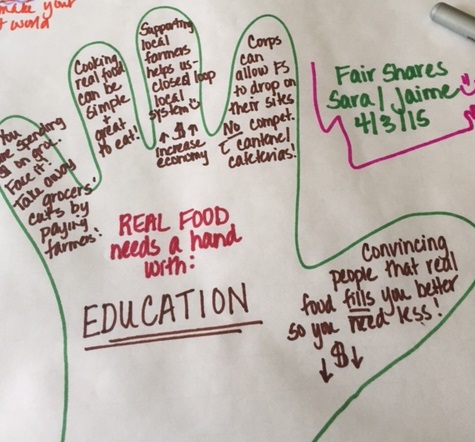EarthDance - Day 6
Amidst the cool, moist days, EarthDance vegetation has been slowly gaining strength. This week’s harvest was ample with more garlic scapes! The new show stoppers this week: arugala and squash!
Picking the squash was fun, serious fun. Pulling apart the giant green lush leaves, finding the little colored gems inside and then using a razor sharp knife to cut them with an inch-sized stem. Monica said that her mentor taught her that no sounds should be heard while picking squash…caring for them tenderly is the key to keeping them beautiful. My favorite was the Zephyr, a bi-colored longer squash. I plan on serving them Saturday evening at our dinner party…with a garlic scape cheese dip.
A funny looking Zephr squash with a funny guy, Chris!
In the afternoon, we did a long field walk checking out the trees that have been planted on the farm. Matt showed us the grafting marks from the fall’s work on the trees. I look forward to watching them grow. Matt also modeled a belt bucket...handy for harvesting fragile fruits.
I learned how to use the walk-behind tractor. Monica and I attached the rotary plow and I made this gorgeous trail in the bed. Monica is a wonderful teacher, thorough and patient, listening to questions and answering with kindness and always ready to laugh. She’s amazing. I taped Katie running the walk-behind tractor. It looks like an overgrown rotary tiller.
A newly furrowed bed, thanks to the walk behind tractor!
Evening class was by led by Missouri homesteaders, Eric and Joanna Reuter from Chert Hollow Farm. They were honest and inspiring…they are homesteaders because they like to eat good food, simple enough, but the work can be hard. Very hard.
Molly Rockamann, EarthDance’s Founding Director add some great advice to a question posed to the Reuters at the end of their talk. One of our farmys asked what to contemplate when buying farm land. Molly’s response was that there are three things to contemplate in the purchase of a farm: 1) Neighbors, 2) Code and 3) Existing Infrastructure. Powerful words, thank you, Molly!
















































































